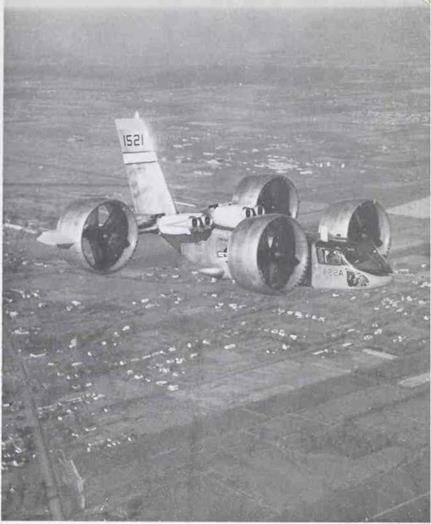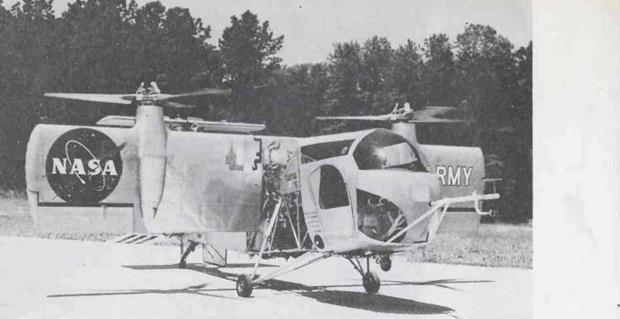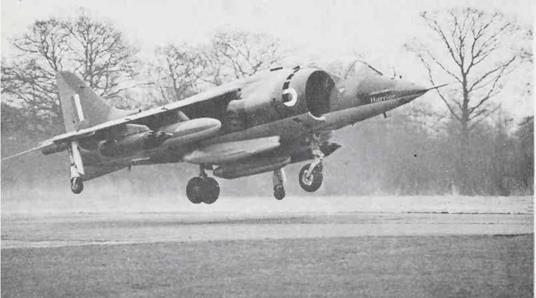STRAIGHT UP AND AWAY
The length of a runway limits the kinds of planes that can land at an airport. Airlines have been searching for ways to get around this problem. One answer is to use aircraft that can take off and land vertically.
The vertical takeoff and landing machines are known as VTOL airplanes. A VTOL does not need a runway. It can hover like a helicopter. And it can fly like a regular airplane.

The X-22A is a VTOL aircraft. It has four huge ducted fans. Four jet engines provide the power to drive the seven-foot-diameter propellers. The fans can be tilted. They can be tilted vertically or horizontally.
 |
During takeoff the fans of the X-22A are tilted vertically. The thrust is directed downward. The downward thrust causes the plane to be lifted straight up.
As the X-22A rises, the pilot begins tilting the fans horizontally. In the photograph on the opposite page, the fans are being tilted from a vertical to a horizontal position. The plane moves forward with the fans in a horizontal position.
The X-22A basically is a research craft. It is 40 feet long and 20 feet high. The X-22A has two wings. A fan is fixed to the end of each wing. The long wing—located just forward of the vertical stabilizer—has a span of 39 feet. The shorter wing is mounted just behind the cockpit.

The Vertol 76 shown above is a VTOL that has a tiltwing. With the wings in the position shown in the photograph, the propellers are used as rotary wings for takeoff. The wings and engines tilt to a horizontal position to provide thrust and lift for conventional flight.

The Hawker Siddeley Harrier shown below is a British fighter used by the Royal Air Force. It has a speed of Mach 1,25 and operates above 50,000 feet. The Harrier looks like a regular jet but it is a VTOL. There is a thrust – deflection nozzle inside its engine. The nozzle is used to direct the exhaust power of its engine downward for takeoff and landing and to the rear for horizontal flight.










